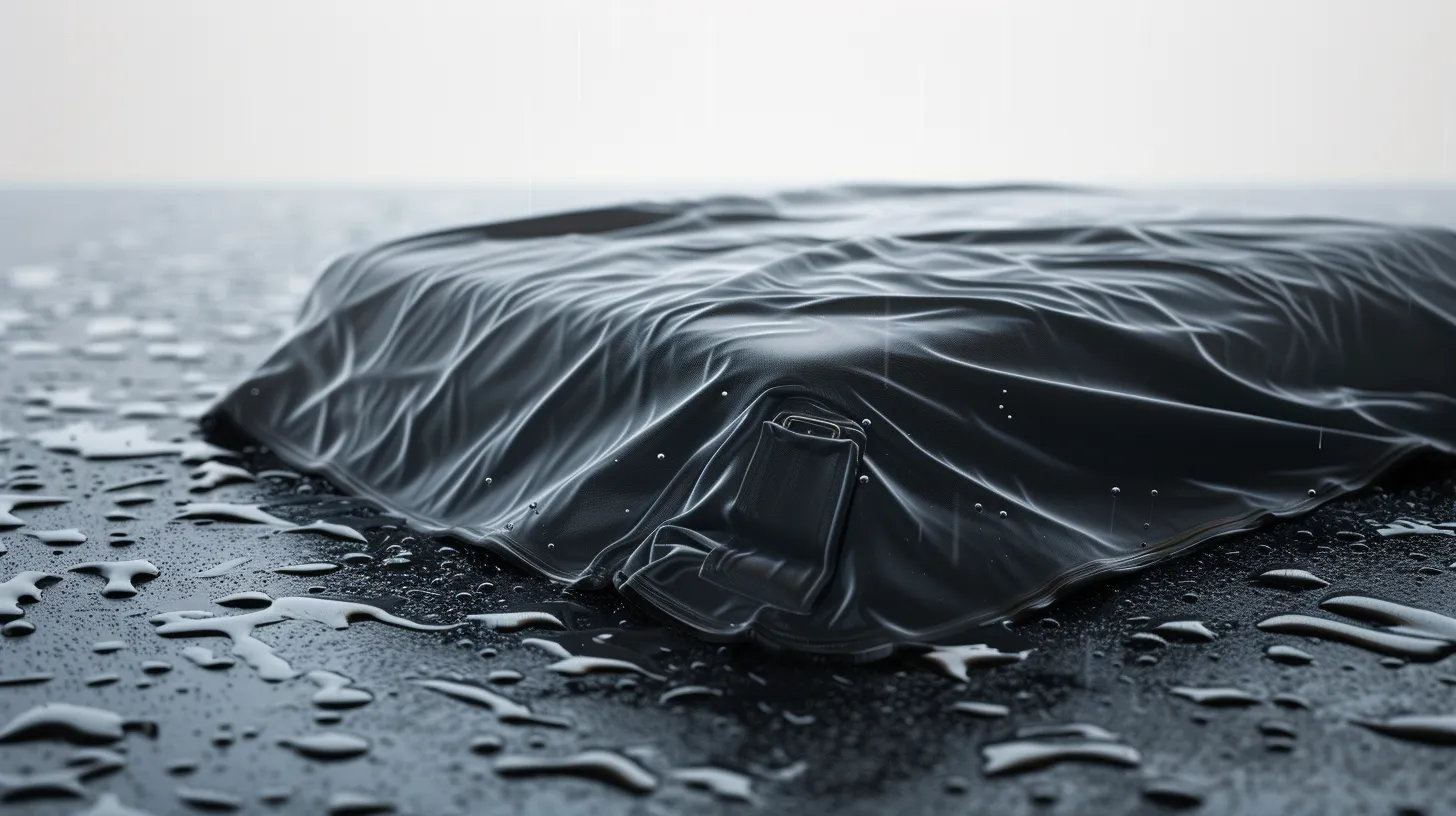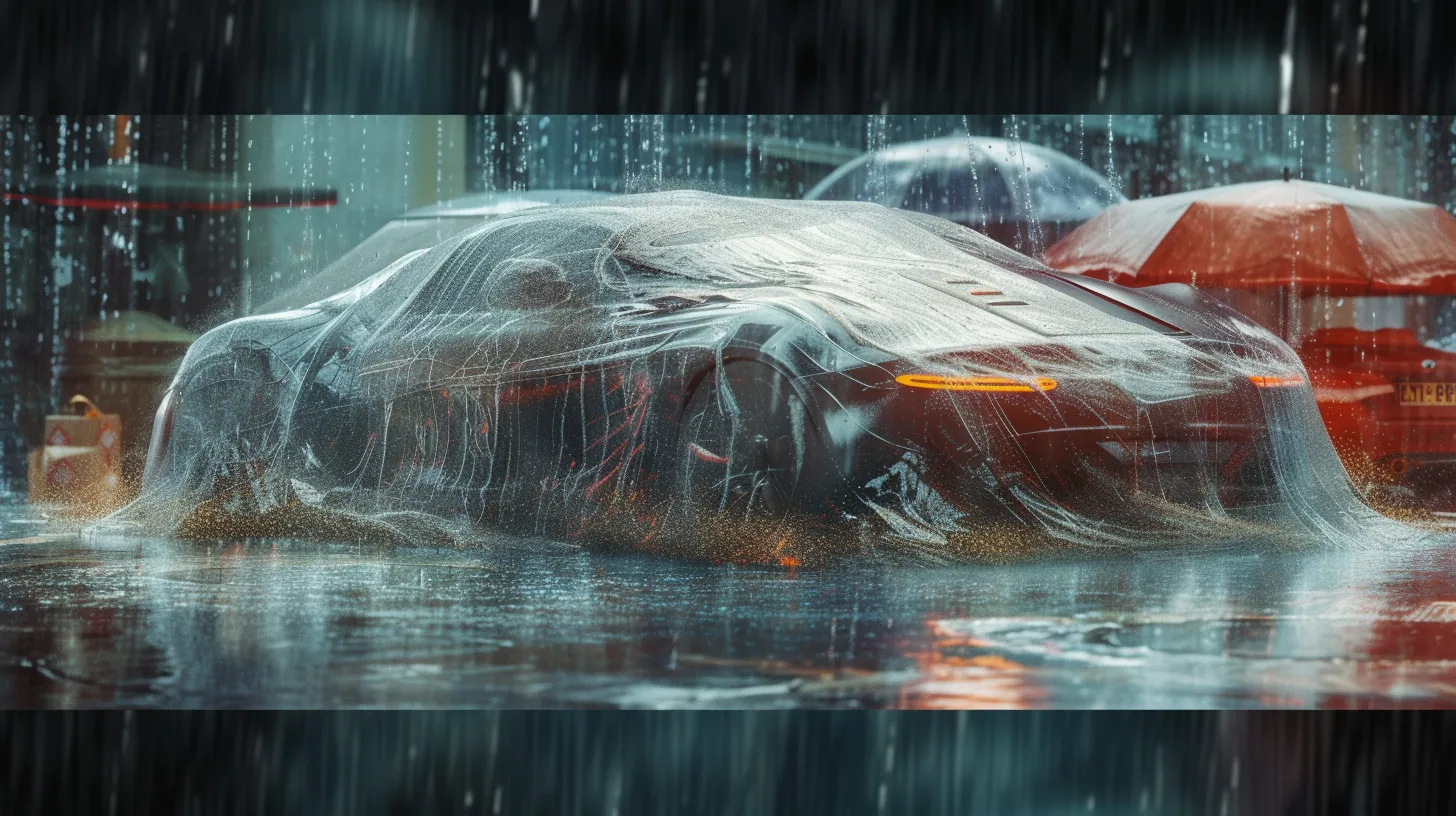In the realm of automotive protection, the debate between the efficacy of waterproof versus water-resistant car covers is perennial. Understanding the nuanced distinctions between these materials—ranging from nylon, PVC, to polyethylene—is critical for any car owner aiming to safeguard their vehicle against the elements.
While waterproof covers promise an impermeable barrier against rainwater, they may inadvertently trap moisture, leading to potential damage. Conversely, water-resistant covers offer breathability, allowing moisture to evaporate and thus reducing the risk of corrosion. This pivotal choice between waterproofing and breathability beckons a deeper exploration into what truly constitutes the optimal shield for your vehicle.
Understanding Waterproof Car Covers
When considering the protection of your vehicle against the elements, understanding the nuances of waterproof car covers is essential. These covers, typically crafted from materials like nylon, PVC, or polyethylene, are designed to block external moisture effectively, thereby providing a shield against various weather conditions.
However, not all waterproof car covers are created equal. Inexpensive options may lack the necessary features to offer sufficient protection, potentially leading to damage on the vehicle.
A key aspect to consider is breathability. While waterproof car covers prevent moisture from external sources, condensation can still form between the cover and the vehicle if the cover is not breathable. This trapped moisture poses a risk as it can lead to paint damage and, more significantly, rust formation.
Therefore, selecting a waterproof car cover that also boasts breathable properties is crucial for long-term protection. Breathable covers allow any trapped moisture to evaporate, minimizing the risk of damage and ensuring your car remains protected.
In essence, to protect your car effectively, it is important to choose a waterproof car cover that combines moisture-blocking capabilities with breathability to prevent rust formation and maintain the vehicle's condition.
Water-Resistant Vs. Waterproof

Understanding the distinction between water-resistant and waterproof car covers is crucial for selecting the optimal protection for your vehicle. Waterproof covers, typically made from materials like nylon, PVC, or polyethylene, promise a complete shield against moisture. This means they are designed to prevent any water from penetrating the cover and reaching the vehicle, offering a robust barrier against rain, snow, and other forms of moisture.
However, water-resistant covers, while effective in repelling most moisture, may not provide an absolute barrier. They are designed to prevent the majority of water from passing through but might allow for the transmission of dew or very fine moisture, which could potentially lead to damage over time. Moreover, even waterproof covers have their limitations, as water droplets can find their way through seams, hems, vents, and pockets, posing a risk of moisture accumulation.
An important consideration is that inexpensive waterproof covers can trap condensation between the cover and the vehicle, leading to potential dampness and corrosion. On the other hand, breathable water-resistant covers equipped with mesh vents offer a solution by allowing any trapped moisture to evaporate, thereby minimizing the risk of damage and maintaining the integrity of the vehicle covers.
Material Matters

The choice of material is paramount in ensuring a car cover's effectiveness against moisture and environmental elements. Waterproof car covers are designed with specific materials like nylon, PVC, or polyethylene, which act as a robust barrier against external moisture, preventing rainwater and other liquids from reaching the vehicle's surface. However, it's crucial to note that water can still penetrate through seams, hems, vents, and pockets if they are not adequately sealed.
- Nylon, PVC, and Polyethylene : Key materials used in manufacturing waterproof car covers, known for their durability and moisture resistance.
- Seam Sealing : Essential for preventing water penetration through stitches and joins in the cover.
- Custom Sizes to Fit : Ensuring a snug fit reduces the chances of moisture seeping through gaps.
- Investment in Quality : High-quality waterproof covers are more effective at preventing paint damage, rust, and corrosion caused by moisture.
- Limitations : While no cover is 100% waterproof, a well-fitted and appropriately material-designed cover provides significant protection against rain and liquids.
Investing in a waterproof car cover made from these materials and designed to fit your vehicle's specific size can offer effective protection against the damaging effects of moisture.
Maintenance and Care

While investing in a high-quality, waterproof car cover is crucial for protection against moisture, regular maintenance and care of the cover itself play an equally important role in ensuring its long-term effectiveness. Waterproof covers are designed to shield your vehicle from the elements, but without proper upkeep, their protective qualities can diminish over time.
It is essential to regularly clean and dry your car cover to prevent the accumulation of dirt and debris, which can compromise the fabric's integrity and waterproof capabilities.
Storing the car cover in a dry, cool place when not in use is equally important to maintain its effectiveness. Exposure to constant heat or damp environments can deteriorate the material, reducing its ability to repel water. Additionally, avoiding harsh chemicals or bleach during the cleaning process is vital to prevent damage to the fabric.
It's also crucial to inspect the cover periodically for any signs of wear, such as tears, rips, or weak spots, and repair them promptly. This proactive approach ensures optimal protection for your vehicle.
Following the manufacturer's instructions for washing, drying, and storing the car cover can significantly prolong its lifespan, ensuring that it remains a reliable barrier against moisture and other environmental factors.
Choosing the Right Cover
Selecting an appropriate car cover involves considering various factors, including material composition and the specific environmental conditions your vehicle will face. Whether you're looking for a car cover to protect against heavy rainfall or to prevent dust accumulation, understanding the distinctions between waterproof, water-resistant, and breathable covers is crucial.
A comprehensive approach to choosing the right car cover includes:
- Material : Opt for waterproof materials like nylon, PVC, or polyethylene for robust rain and moisture barrier. However, be wary of inexpensive waterproof covers that might trap condensation.
- Breathability : Seek out water-resistant covers with breathable features to allow moisture trapped underneath to evaporate, thus preventing paint damage and rust.
- Environmental Conditions : Tailor your choice to the environment. Areas with high humidity and frequent rain necessitate waterproof or highly water-resistant covers, while breathable covers are ideal for less wet, airier climates.
- Protection Level : Evaluate the level of protection needed. For intense weather conditions, a fully waterproof car cover is advisable, whereas water-resistant covers with breathable mesh vents, like those from Coverstore, offer balanced protection for lighter conditions.
- Additional Features : Consider covers with added benefits like UV protection, soft inner linings to protect your car's finish, and elastic hems for a snug fit.
Choosing the right car cover is about balancing waterproofing, breathability, and the specific needs of your vehicle's storage conditions.










